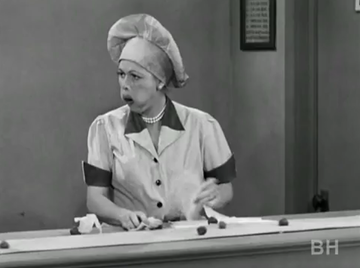Stella: You heard of that market crash in '29? I predicted that.
Jeff: Oh, just how did you do that, Stella?
Stella: Oh, simple. I was nursing a director of General Motors. Kidney ailment, they said. Nerves, I said. And I asked myself, "What's General Motors got to be nervous about?" Overproduction, I says; collapse. When General Motors has to go to the bathroom ten times a day, the whole country's ready to let go. (From Rear Window, 1954)
In January’s blog, waste was defined as, “anything beyond the absolute minimum amount of materials, manpower, or machinery needed to add value to a product or service”. (Flinchbaugh & Carlino, 2006) As I mentioned in that blog, there are seven main sources of waste in the dental practice:
• Overproduction
• Waiting
• Unnecessary Transport
• Over-processing
• Excess Inventory
• Unnecessary Motion
• Defects
In this blog, I’ll be addressing Overproduction in the dental practice. I’ve got to tell you that this is a real head scratcher. How does one over-produce in a dental practice? What could possibly be over-produced? I mean, you can’t produce root canals, or crowns, or restorations; they are specific to the patient, and I doubt that anyone out there is prescribing more than 1 crown per tooth. So, how do we address this?
It’s important to remember that patients are not the only customers that exist in a dental practice. Here are some examples of other provider/customer relationships:
• Provider: reception/front office
o Product: appointed patients
o Customers: practitioners (doctors, hygienists, etc.)
• Provider: Sterilization
o Product: procedure setup trays
o Customers: practitioners
• Provider: Hygienist
o Customer: practice
o Product: necessary dental procedures found during hygiene
You could probably come up with some additional ideas, but I think you see that there are many levels of provider/customer relationships in any dental practice. These may go from the very simple to the very complex.
Let me segue into an example by telling you a story about my mother. She was a registered nurse, and for 30 some-odd years managed her brother’s pediatric practice. She was a one-woman staff for a very busy medical practice. In this office there were 4 exam rooms, almost always full. Now, here’s the amazing thing – you never waited in their office for more than a few minutes. There were no 1.5 hour appointments in ‘her’ office. In fact, it rarely took longer than 20-30 minutes from the time you came in the door and the time you went out.
One of my friends was telling about how he told a friend that he was heading to the pediatrician’s and would be back in 20 minutes. The friend said, “You mean an hour and twenty minutes”. My friend told him that it would only be 20 minutes. From the time he left his home to the time he returned, sure enough, it was about 20 minutes.
Now, don’t go thinking that this was run as a mill – everyone had all the time they wanted with the doctor. Mom’s secret was that she intuitively understood “Lean”. She was efficient, as were most of the other practices in their building. Who wants to sit in a waiting room with a bunch of sick people? They understood that sick makes sick, so they had to avoid patients contacting each other any more than necessary.
At the end of the day, they’d handled scheduled patients, people needing help with illness, emergencies, and had a lunch break. At 5pm, they were done and my uncle was out the door and on the way to make rounds at the three hospitals where he was on staff.
Admittedly, this took unusual management skills, but it is possible.
So, back at the ranch – let’s use an example in the dental practice. Let’s say that the Scheduler (provider) over-produces. What happens when the provider produces more than the customers can handle? I’ve been in literally thousands of office all over the world during my almost 4 decades in this business. I’ve seen the results: tired, harried, late-working ‘customers’. What the impact on the practice?
• Fatigue
• Stress
• Reduced quality by the entire chain of providers all the way to the end customer, the patient.
• Yelled at staff, kids, spouses, and kicked dogs.
I’m not going to take time here to discuss how to change this dilemma. But, you know what fun it is when the airlines over-books because they figure that a given number of customers won’t show up.Any change in procedure takes the buy-in and cooperation of all involved. There are consultants that will help you make your scheduling more efficient. If you have an engaged, intelligent staff, you can probably come up with answers to this dilemma yourselves.
Remember to look at all the areas of your practice that can be made leaner by eliminating any over production.
Next time: Waiting
Works Cited
Flinchbaugh, J., & Carlino, A. (2006). The Hitchhiker's Guide to Lean. Dearborn: Society of Manufacturing Engineers.

